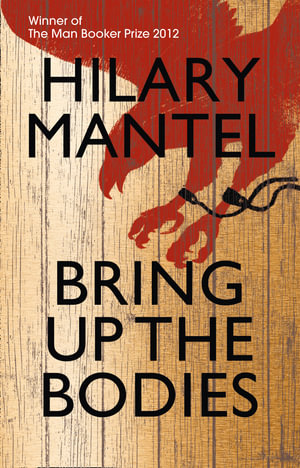James Burkinshaw reviews 'Bring Up The Bodies' by Hilary Mantel, winner of the 2012 Man Booker Prize on October 16, 2012.
The novel derives its title from the order to 'Bring up the bodies!', i.e. deliver the four accused men for trial. Their bodies are interchangeable; four other men would have filled the role of "traitors" equally sufficiently for the purposes of Cromwell and his King. And, after execution, the four chosen are described as simply “a heap of entangled bodies without heads, heaped promiscuously as if on a bed.”
 |
| Portrait of Thomas Cromwell by Hans Holbein (source: reformation.org) |
Thomas Cromwell is one of English history’s most intriguing figures (in every sense of the word). Traditionally seen as ruthless, cynical, even villainous (an image encouraged by the narrow-eyed, evasive figure presented in Holbein’s famous portrait on the left), he has, recently, been treated as both more complex and more sympathetic by historians and authors alike. In the best-selling murder mysteries of CJ Sansom, for example, Cromwell appears as the wise mentor to the protagonist, Matthew Shardlake. In Hilary Mantel’s Bring Up the Bodies (sequel to Wolf Hall), it is through Cromwell’s eyes that we witness the downfall of Henry VIII's second wife, Anne Boleyn.
This period has been so comprehensively covered, the fates of the protagonists are so well known, that Mantel’s use of the present tense throughout seems a means of escaping this burden of historical knowledge, placing the characters in a present that has not yet become "History". It also has the effect of making Cromwell seem oddly passive, even fatalistic, carried along by events that often appear outside of his control. Rather than being presented as a cunning strategist and manipulator, he is seen struggling to manage the whims of his master, King Henry, whose self-serving sentimentality Mantel captures well: “Henry drops Wolsey’s name into conversation, as if it were not he, but some other monarch, who had hounded the cardinal to death.” However, even the king is carried along by events outside of his control (“Chivalry’s day is over . . . banker sits down with banker, and kings are their waiting boys”), as is Anne, rowed to her fate in the Tower, her “whole life receding with every stroke of the oars”.
Indeed the narrative often seems dreamlike, calling into question “the nature of the border between truth and lies, permeable and blurred". Asked how many lovers Queen Anne has had, Thomas Wyatt answers, “A dozen? Or none? Or a hundred’’ Everything and everyone in this novel is presented as contingent. Cromwell himself is “a black shape against the brickwork, a fragment cut out of the night”. Once abandoned by Henry, the formerly powerful and commanding Anne is merely “an impostor, like a child or a court fool, dressed in the costumes of a queen.” This sense of people being forced into roles permeates the novel; in order to show Anne as guilty of infidelity, Cromwell “needs guilty men. So he has found men who are guilty. Though perhaps not guilty as charged.”
Indeed the narrative often seems dreamlike, calling into question “the nature of the border between truth and lies, permeable and blurred". Asked how many lovers Queen Anne has had, Thomas Wyatt answers, “A dozen? Or none? Or a hundred’’ Everything and everyone in this novel is presented as contingent. Cromwell himself is “a black shape against the brickwork, a fragment cut out of the night”. Once abandoned by Henry, the formerly powerful and commanding Anne is merely “an impostor, like a child or a court fool, dressed in the costumes of a queen.” This sense of people being forced into roles permeates the novel; in order to show Anne as guilty of infidelity, Cromwell “needs guilty men. So he has found men who are guilty. Though perhaps not guilty as charged.”
 |
| (source: booktopia.com) |
There is a also a strangely disembodied quality to the novel itself (despite it weighing in at over a thousand pages, after two volumes), and this reader ended with a sense of waking up from a dream to find the characters dissipating quickly in the memory.
Comments
Post a Comment
Comments with names are more likely to be published.